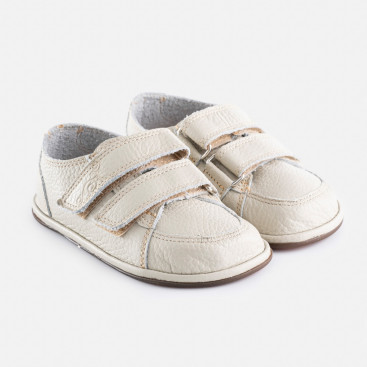1. Barefoot supports the natural development of the foot
A child's foot is a structure that is constantly developing. In preschool age, the muscles, ligaments, and arches are still in a dynamic growth phase. Traditional footwear—especially with stiff soles and heel support—often limits this process by forcing unnatural positioning and restricting muscle activity.
Barefoot slippers allow the foot to move freely. Thanks to a flexible, thin sole and a wide toe box, the toes are not squeezed, and the muscles can function in line with natural biomechanics. This design supports the development of both longitudinal and transverse arches, prevents deformities, and strengthens stability. Let’s also not forget that quality materials allow the foot to breathe—an important factor for a child’s health.
%20(1).jpg)






































.jpg)
.jpg)
.jpg)





